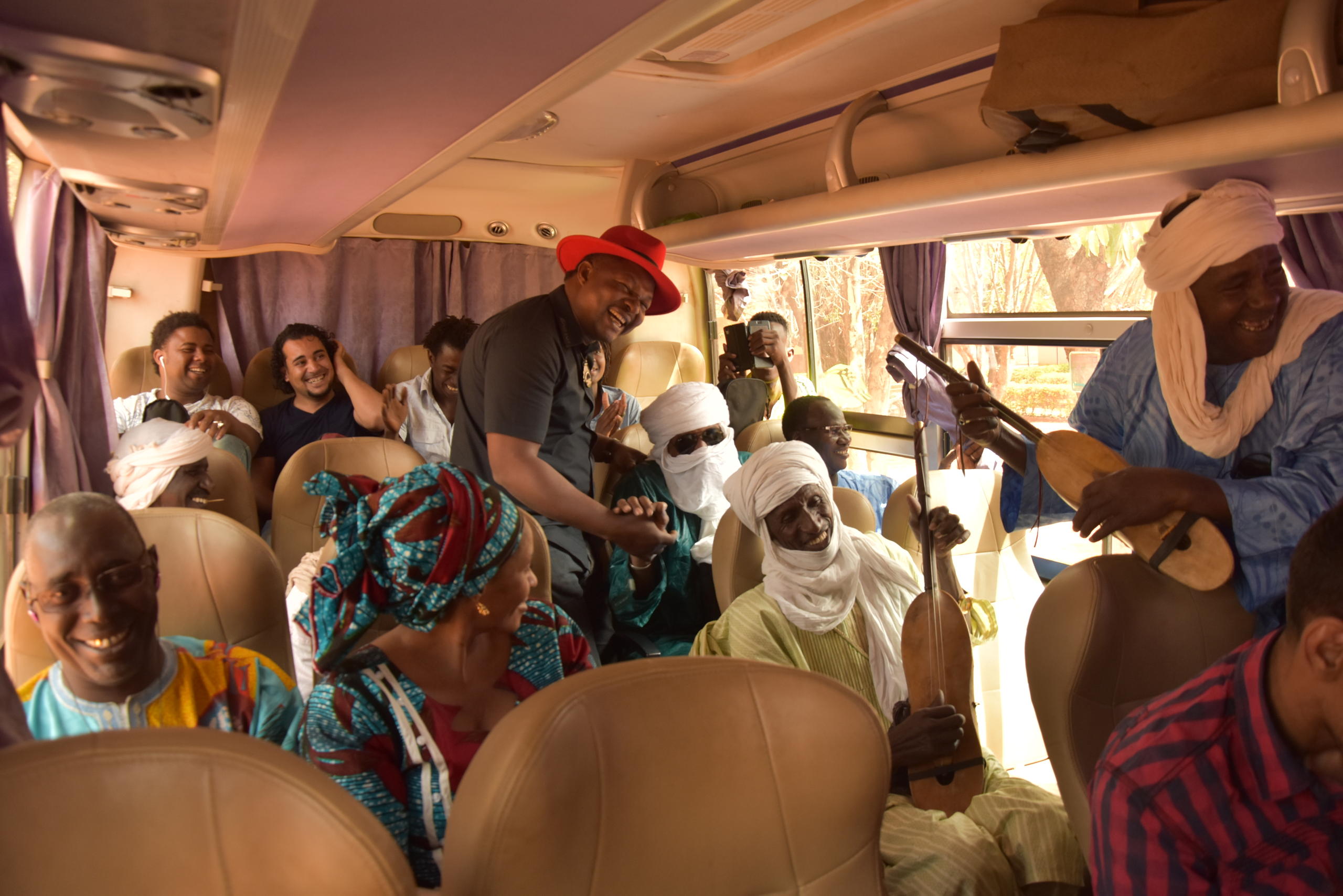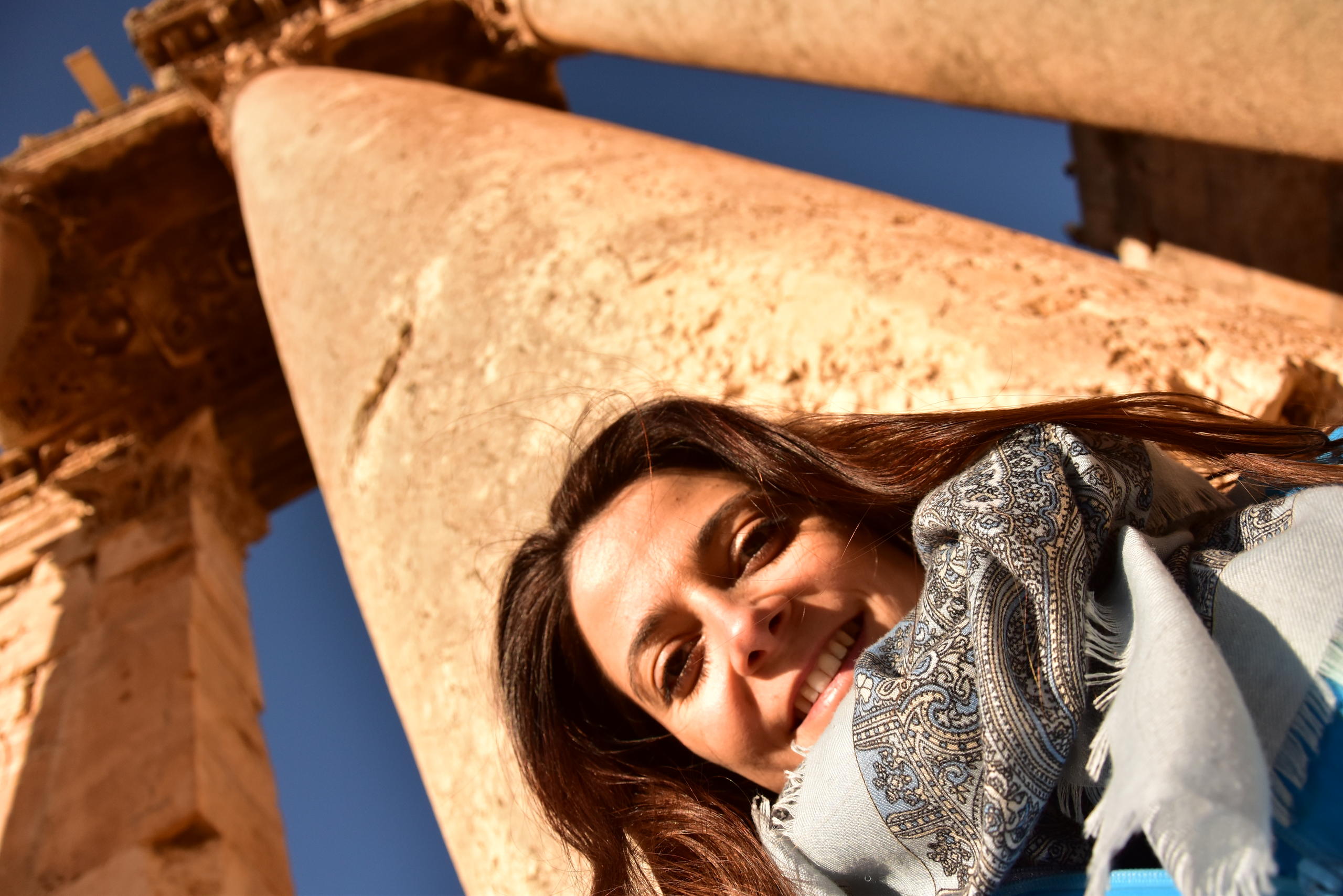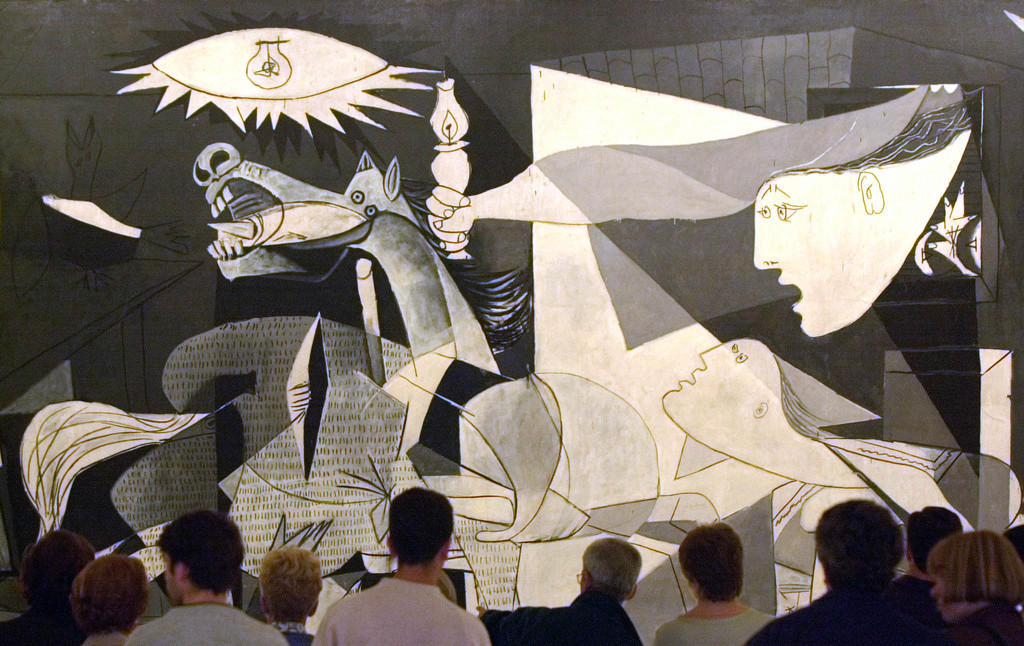
Building peace with rock bands, orchestras, and theatre

Could art and culture be the future tools of diplomats and peacebuilders? A Swiss woman’s initiative is helping to make it happen, step by step.
People have long turned to stories, painting, music and theatre as a way of coping with hardship and fear. But when it comes to conflict mediation, art is often held at arm’s length, seen as a cultural asset not to be confused with the “real work” that goes on behind closed doors.
Lea Suter founded the PeacePrintsExternal link initiative to show that art can play more of a role in the areas of conflict resolution and peacebuilding. Suter, who comes from Switzerland, wants to show that cultural activities are not merely “decorations” for mediation processes but can be “active tools and agents of peace processes themselves”.
Sitting outside the Palais des Nations where she is currently working on a mandate for the United Nations, Suter recalls a recent trip to Kosovo where she visited the School of RockExternal link in the city of Mitrovica. There, young people of Albanian and Serb backgrounds transcend ethnic affiliations to come together and create music. The school, established in 2008, has branches on both sides of the symbolically divisive Ibar River.
“These young people learn to find another identity,” Suter says. “Being Kosovo Serbian is part of your identity, yes, but…you also have a musical identity, an artistic identity, and in this nobody cares where you come from.”
Slowly but surely, the School of Rock is changing things under the radar. Three bands had formed when Suter was there in April, a significant step in a divided city where people are often afraid to cross the river. And the teenaged participants have embraced the project because, as Suter puts it, “they just want to play music”.
‘Solutions journalism’
The Kosovo project is part of PeacePrints, launched late last year, which is an online platform showing how art is being used to reconstruct war-affected communities around the world. So far, Suter has visited Lebanon, Mali, and Kosovo. She is soon bound for the Korean border, Myanmar, and potentially Ukraine. Her goal is to visit a dozen countries, building up stories and interest before letting the project bloom independently in the hands of local journalists and activists.

Given her varied background – cultural studies, intercultural relations, languages – it’s not surprising that she was driven by a perceived underappreciation of the role of art. But she also had a broader goal in mind.
“People have a skewed perception of how bad things are in the world – more negative than the facts,” she says. “We need to tell the other stories, the ones where things work out, to get a more holistic and closer-to-reality picture of the world.”
In this sense, the initiative could also fall under “solutions journalism”: a form of proactive investigation that aims to shed light on possible answers to problems rather than just causes. Just as this school of journalism grew out of a reaction to the bloody headlines that often dominate news cycles, Suter’s project grew from her own response to how we approach conflict and peacebuilding.
“When you look at our history books, we base our whole evolution, even our whole existence, on the details of war itself,” she points out. “Of course we need to know about this, but why not focus more on how they were solved?”
Pen versus sword
Suter is quick to acknowledge it all sounds very idealistic and insists she isn’t naive to the massive political and financial instruments at work behind modern conflicts. She is also aware of how culture can be misused for political gains, citing the example of the Nazi party’s propagandised aesthetics in the 1930s.
But interest in her work is growing. Swisspeace, a Bern-based think-tank, has published several research studies on the topic. The most recent, from late 2016External link, outlines significant benefits to art at the individual, relational, and societal levels. The “logic of art”, the research says, differs from the logic of science or of politics because it is less oriented towards a fixed outcome. It opens new space for improvisation, and therein lies its power.
Suter confirms that art is often most useful after a conflict to help reconciliation and prevent escalation rather than during war itself. This was the case in Lebanon, for example, where she visited a cultural cafe in Tripoli, a city divided between Sunni and Alawite clans. What began as a tense theatre project – initial participants came with razor blades hidden in their mouths –has grown into a community-led café run by people from both sides of the divide. The participants, Suter says, are learning that their problems of poverty and grief unite instead of divide them.
Similarly, the initiative Suter will visit in Korea – a cross-border orchestra featuring musicians from north and south of the Military Demarcation Line – is hardly an antidote to all-out war, but it can help to solidify peace and create the conditions for reconciliation. Suter believes these types of initiatives are vital, just as important as the traditional dialogue-based political mediations that have often sidelined cultural projects as a “soft” approach.

Making it work
But can such ideas infiltrate the priorities of decision-makers and diplomats? To some extent, they already have. The Swiss Agency for Development and Cooperation (SDC) supports “cultural events, artistic creation, and institutions working within culture and arts” across much of the world, says Géraldine Zeuner, Head of the SDC’s Culture and Development team.
They do this by promoting and funding better working conditions for artists in developing regions, as well as by organising artistic exchanges between Switzerland and other countries. And though their focus is on “the freedom of cultural and artistic expression” – staying away from “political content” or the idea of art as a “tool” – they do recognise the power of art for “re-establishing normality and hope” in the wake of, or leading up to, a conflict.
Until recently, many such projects have been one-off initiatives involving individual artists. A 2015 Swisspeace conferenceExternal link called for a move towards a more systematic usage of art in peacebuilding, including more professional approaches and idea exchanges.
This is where Suter’s project finds its niche: not in creating projects but in boosting public awareness of their utility. Her project is entirely self-funded so far, but she may launch a round of crowdfunding once she has finalised her goals. For now, she likes its independence and is hesitant about involving decision-makers too heavily.
“The more you get political actors involved, the more difficult it becomes”.

In compliance with the JTI standards
More: SWI swissinfo.ch certified by the Journalism Trust Initiative































You can find an overview of ongoing debates with our journalists here . Please join us!
If you want to start a conversation about a topic raised in this article or want to report factual errors, email us at english@swissinfo.ch.